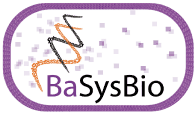
Context
The availability of complete genome sequences and the development of high throughput technologies have led to the accumulation of raw biological data at an unprecedented scale. These data are different in nature as they come from various sources and they provide detailed information on the individual components of the living cell.
However, ample experimental and theoretical evidence suggests that extensive knowledge about cellular components is insufficient to describe the operation of complex systems. Hence, a central paradox of contemporary biology and medicine is the dissonance between our understanding of the parts and the operation of the whole. The complex dynamic behaviour of biological systems is generated by a complex network of interactions between the individual components of the cell.
It is clear that biological systems can no longer be understood intuitively and that a theory-based approach is necessary to unravel this complexity. This realisation has led to the emergence of systems biology (SB), a holistic approach that adopts the view that biological systems are fundamentally composed of two types of information: genes, encoding proteins that form the molecular machines that execute the functions of life and networks of regulatory interactions that control the hierarchical flow of information from: DNA -> mRNA -> proteins -> molecular machine -> metabolites -> fluxes -> phenotype
A multitude of regulation processes can take place at each step in this flow of information, thus generating the complexity in biological networks. Contemporary systems biology studies still lack the capacity to simultaneously observe the regulations taking place at each level in a biological system. The description of such hierarchical regulations would allow to link genes and proteins to higher-level biological functions and facilitate the delineation of the operational units of function that determine the systemic phenotypes.